Grow Celery at Home? Absolutely! Imagine stepping into your backyard and snipping fresh, crisp celery stalks for your salad, soup, or that healthy afternoon snack. No more limp, store-bought celery – just vibrant, flavorful goodness grown with your own two hands. For centuries, celery has been cultivated, not just for its delicious crunch, but also for its medicinal properties. Ancient Greeks and Romans valued it for its ability to soothe nerves and aid digestion.
But let’s be honest, buying celery can be a gamble. Sometimes it’s perfect, other times it’s stringy and bitter. That’s where this DIY guide comes in! I’m going to share some simple, effective tricks and hacks to help you grow celery at home, even if you have limited space or gardening experience. We’ll cover everything from choosing the right variety to troubleshooting common problems, ensuring you have a thriving celery patch in no time.
Why do you need this? Because fresh, homegrown celery is simply better! It tastes better, it’s healthier, and it’s incredibly rewarding to nurture something from seed to table. Plus, it’s a fantastic way to reduce your grocery bill and connect with nature. So, grab your gardening gloves, and let’s get started on this exciting journey of growing your own celery!
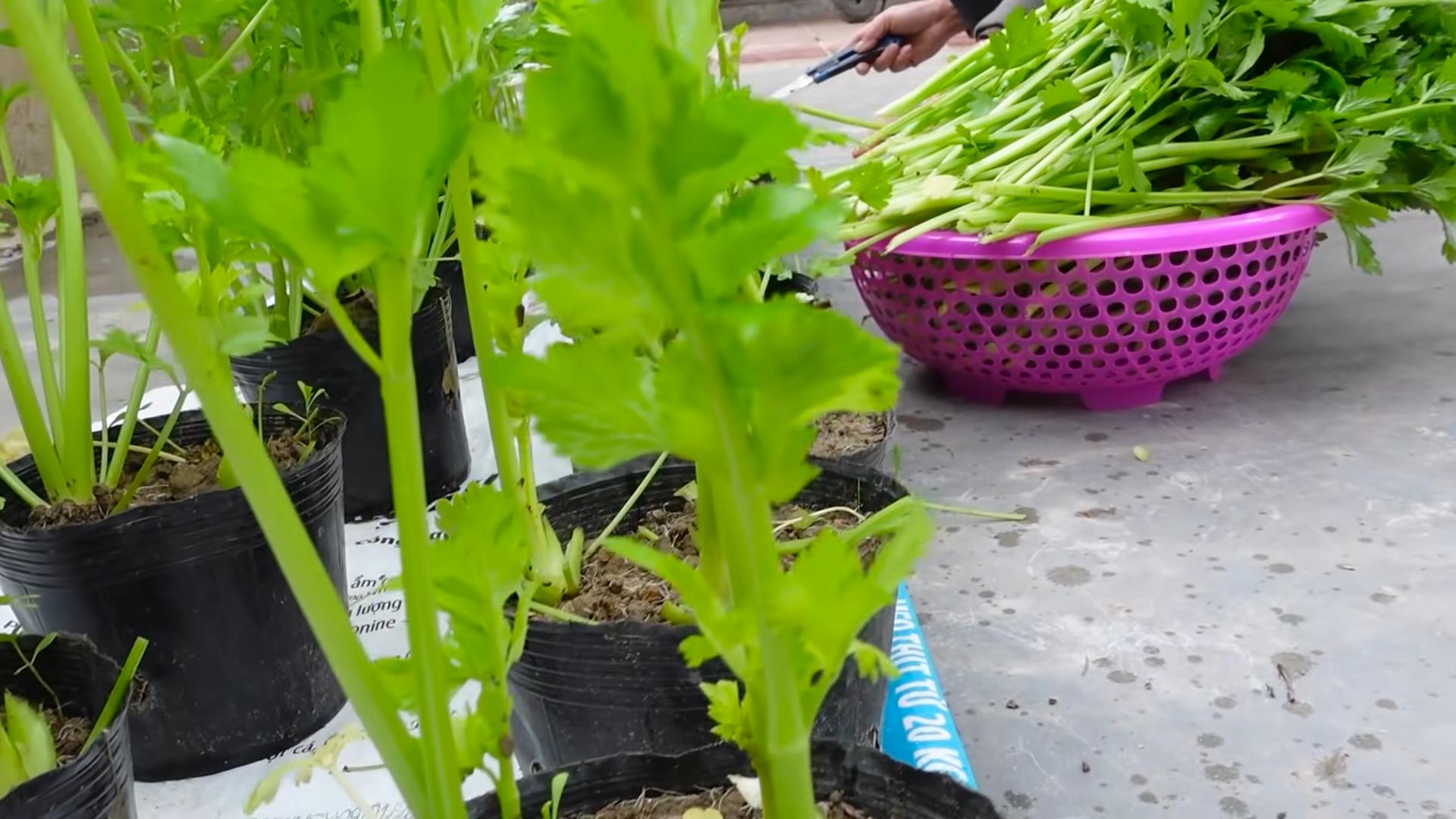
Grow Your Own Celery: A Beginner’s Guide
Hey there, fellow gardening enthusiasts! Ever thought about growing your own celery? It’s easier than you might think, and nothing beats the fresh, crisp taste of homegrown celery straight from your garden (or even your windowsill!). I’m going to walk you through the whole process, from starting with a leftover celery base to harvesting your very own stalks. Let’s get started!
What You’ll Need
Before we dive in, let’s gather our supplies. Here’s what you’ll need to successfully grow celery at home:
* Celery Base: This is the bottom part of a celery bunch that you’d normally throw away. Make sure it’s firm and healthy-looking.
* Shallow Dish or Bowl: Something to hold water and the celery base.
* Water: Tap water is fine.
* Potting Soil: A good quality potting mix is essential for healthy growth.
* Pot: Choose a pot that’s at least 8 inches in diameter and 8 inches deep. Celery needs room for its roots to grow.
* Sunny Location: Celery loves sunlight, so find a spot that gets at least 6 hours of direct sunlight per day.
* Spray Bottle (Optional): For misting the celery leaves.
* Fertilizer (Optional): A balanced liquid fertilizer can help boost growth.
Regrowing Celery from a Base: The First Steps
This is where the magic begins! We’re going to coax a new celery plant from what would otherwise be kitchen waste.
1. Prepare the Celery Base: After you’ve used the celery stalks, don’t toss the base! Carefully cut off the bottom inch or two of the celery bunch, keeping the root end intact. Try to make a clean cut.
2. Place in Water: Put the celery base in your shallow dish or bowl. Add enough water to cover the bottom inch of the base, but don’t submerge the entire thing. You only want the roots to be in the water.
3. Find a Sunny Spot: Place the dish with the celery base in a sunny windowsill or another location that gets plenty of light.
4. Change the Water Regularly: Every day or two, change the water in the dish to keep it fresh and prevent mold growth. This is really important!
5. Observe and Wait: Over the next few days, you should start to see small roots emerging from the bottom of the celery base and new growth appearing from the top. Be patient; it might take a week or two.
Transplanting to Soil: Giving Your Celery Room to Grow
Once you see healthy roots and new growth, it’s time to move your celery to a pot with soil.
1. Prepare the Pot: Fill your pot with potting soil, leaving about an inch of space at the top. Gently pat the soil down.
2. Carefully Remove the Celery Base: Gently lift the celery base from the water, being careful not to damage the roots.
3. Plant the Celery Base: Dig a small hole in the center of the pot, large enough to accommodate the celery base and its roots. Place the celery base in the hole and gently cover the roots with soil. Make sure the top of the celery base is still exposed.
4. Water Thoroughly: Water the soil well after planting, until the water drains out of the bottom of the pot.
5. Return to a Sunny Location: Place the pot in a sunny location where it will receive at least 6 hours of direct sunlight per day.
Caring for Your Growing Celery: Keeping it Happy and Healthy
Now that your celery is planted, it’s time to provide it with the care it needs to thrive.
1. Watering: Celery needs consistent moisture, so water it regularly. The soil should be moist but not soggy. Check the soil moisture by sticking your finger into the soil; if it feels dry, it’s time to water. I usually water mine every other day, but it depends on the weather.
2. Fertilizing (Optional): To give your celery a boost, you can fertilize it every few weeks with a balanced liquid fertilizer. Follow the instructions on the fertilizer package. I like to use a fertilizer that’s specifically formulated for vegetables.
3. Misting (Optional): Celery likes humidity, so you can mist the leaves with water every day or two, especially if you live in a dry climate. This will help keep the leaves healthy and prevent them from drying out.
4. Weeding: Keep the pot free of weeds, as they can compete with the celery for nutrients and water.
5. Pest Control: Keep an eye out for pests like aphids or slugs. If you see any, you can try spraying them with insecticidal soap or hand-picking them off the plant.
Blanching Celery (Optional): For a Milder Flavor
Blanching celery is a technique that involves excluding light from the stalks to make them more tender and less bitter. It’s not essential, but it can improve the flavor of your homegrown celery.
1. When to Blanch: Start blanching your celery about two weeks before you plan to harvest it.
2. How to Blanch: There are several ways to blanch celery:
* Mounding Soil: Gently mound soil around the base of the celery stalks, leaving the top leaves exposed.
* Cardboard Collars: Wrap the celery stalks with cardboard collars, securing them with tape or string.
* Newspaper: Wrap the celery stalks with newspaper, securing it with tape or string.
3. Monitor and Wait: Leave the blanching material in place for about two weeks.
Harvesting Your Celery: The Moment of Truth!
After a few months of care, your celery should be ready to harvest!
1. When to Harvest: You can harvest celery when the stalks are at least 6 inches long and have reached a size that you’re happy with.
2. How to Harvest: Use a sharp knife to cut the celery stalks at the base of the plant. You can harvest individual stalks as needed, or you can harvest the entire plant at once.
3. Enjoy Your Harvest: Wash the celery stalks thoroughly and enjoy them in salads, soups, stews, or as a healthy snack!
Troubleshooting: Common Celery Growing Problems
Even with the best care, you might encounter some problems while growing celery. Here are a few common issues and how to address them:
* Yellowing Leaves: This could be a sign of overwatering, underwatering, or nutrient deficiency. Check the soil moisture and adjust your watering schedule accordingly. You can also try fertilizing the plant with a balanced fertilizer.
* Stunted Growth: This could be caused by insufficient sunlight, poor soil, or pests. Make sure your celery is getting enough sunlight and that the soil is well-draining and nutrient-rich. Check for pests and treat them as needed.
* Bolting: Bolting is when the celery plant prematurely produces flowers and seeds. This is usually caused by stress, such as extreme temperatures or inconsistent watering. Try to provide your celery with consistent care and protect it from extreme weather conditions.
* Pests: Aphids, slugs, and other pests can damage celery plants. Inspect your plants regularly and treat any infestations promptly.
Tips for Success: Making Your Celery Thrive
Here are a few extra tips to help you grow the best celery possible:
* Choose the Right Variety: Some celery varieties are easier to grow than others. Look for varieties that are known to be disease-resistant and well-suited to your climate.
* Start with Healthy Seedlings: If you’re not starting from a celery base, start with healthy seedlings from a reputable nursery.
* Provide Consistent Care: Celery needs consistent moisture, sunlight, and nutrients to thrive. Don’t let the soil dry out, and fertilize regularly.
* Protect from Frost: Celery is sensitive to frost, so protect it from freezing temperatures.
* Be Patient: Celery takes time to grow, so be patient and don’t get discouraged if it doesn’t happen overnight.
Growing your own celery is a rewarding experience that allows you to enjoy fresh, healthy produce right from your own home. With a little bit of care and attention, you can successfully grow celery from a leftover base and enjoy the delicious flavor of homegrown celery. Happy gardening!
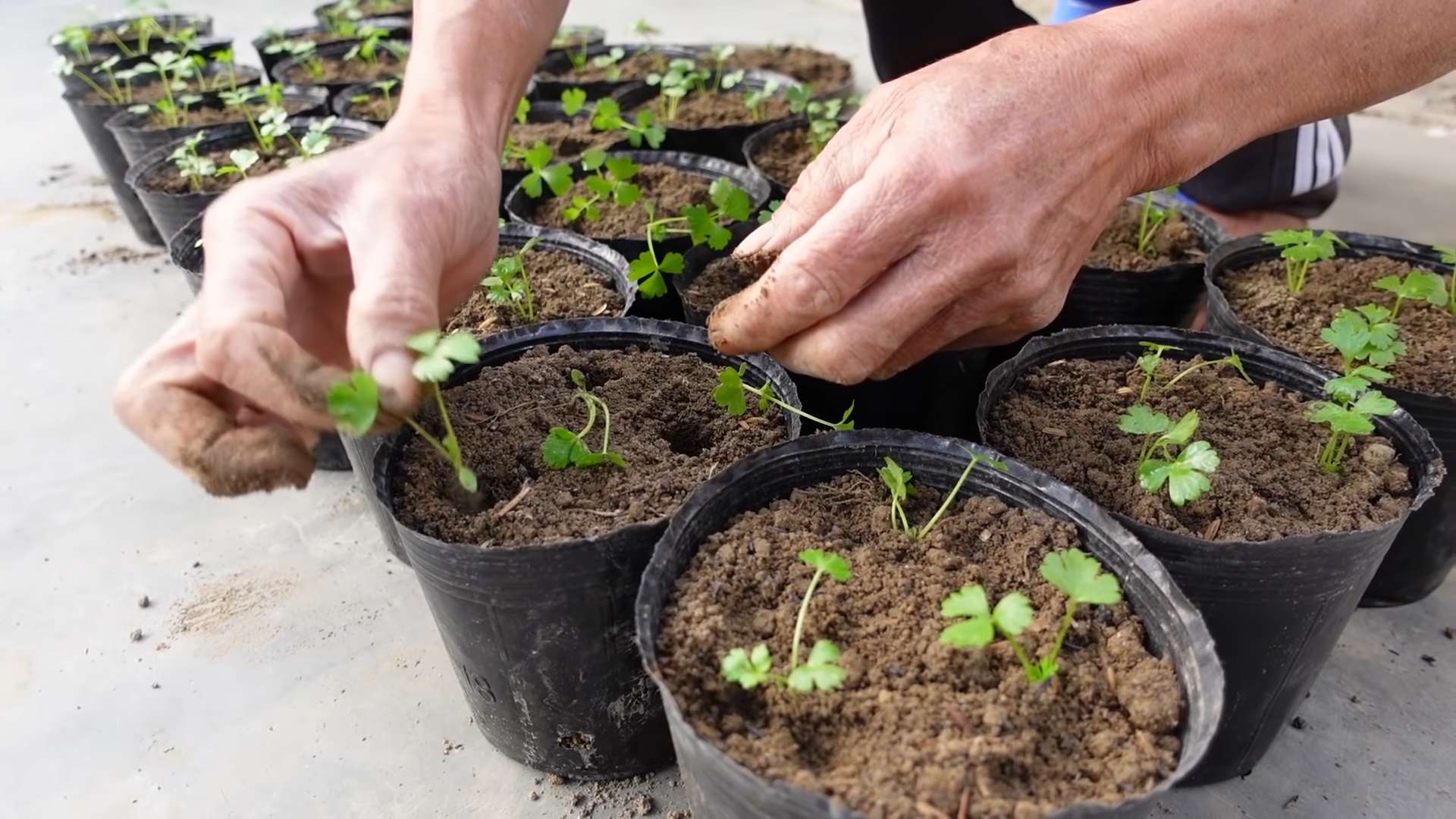
Conclusion
So, there you have it! Growing celery at home from scraps isn’t just a fun experiment; it’s a sustainable way to reduce food waste, enjoy fresh, flavorful celery, and connect with the natural world. This simple DIY trick transforms kitchen scraps into a thriving plant, offering a continuous supply of this versatile vegetable.
Why is this a must-try? Because it’s incredibly easy, cost-effective, and rewarding. Imagine the satisfaction of harvesting celery that you grew yourself, knowing you’ve contributed to a more sustainable lifestyle. Plus, homegrown celery often boasts a more intense flavor than store-bought varieties, adding a delightful zest to your soups, salads, and snacks.
But the benefits don’t stop there. This method is a fantastic educational opportunity, especially for children. It teaches them about plant life cycles, resourcefulness, and the importance of reducing waste. It’s a hands-on science lesson right in your kitchen!
Looking for variations? Consider experimenting with different types of celery. While standard green celery is the most common, you can also try growing red celery or even celeriac (celery root) using similar propagation techniques. You can also experiment with different potting mixes to see which yields the best results in your specific climate and growing conditions. Some gardeners swear by adding a bit of compost tea to their watering routine to boost growth.
Another fun variation is to use the celery leaves in different ways. Don’t discard them! Celery leaves are packed with flavor and can be used in salads, soups, or as a garnish. You can even dry them and grind them into a celery salt for a unique seasoning.
Furthermore, you can extend the growing season by starting your celery indoors and then transplanting it outdoors when the weather warms up. This is particularly useful if you live in a region with short summers.
We wholeheartedly encourage you to try this DIY trick. It’s a simple yet powerful way to embrace sustainability and enjoy the fruits (or rather, vegetables) of your labor. Don’t be intimidated if you’ve never grown anything before. This is a perfect project for beginners.
Once you’ve given it a try, we’d love to hear about your experience! Share your photos, tips, and challenges in the comments below. Let’s create a community of home gardeners who are passionate about reducing waste and growing their own food. Your insights could inspire others to embark on their own celery-growing journey. Let’s all learn and grow together! Remember, even small steps can make a big difference in creating a more sustainable future. So, grab that celery base, get your hands dirty, and start growing!
Frequently Asked Questions (FAQ)
How long does it take to grow celery from a base?
The time it takes to grow celery from a base can vary depending on several factors, including the variety of celery, the growing conditions (light, temperature, humidity), and the quality of the initial celery base. Generally, you can expect to see new growth within a week or two after placing the base in water. After that, it will take several weeks to months for the celery to fully mature and be ready for harvest. You can start harvesting individual stalks once they reach a desirable size. Remember that growing celery from a base is more about regrowing the plant for leaves and smaller stalks rather than producing a full-sized head of celery like you would find in the store.
What kind of water should I use?
It’s best to use filtered or dechlorinated water for growing celery from a base. Tap water often contains chlorine and other chemicals that can inhibit plant growth. If you don’t have a water filter, you can let tap water sit out in an open container for 24 hours to allow the chlorine to evaporate. Rainwater is also an excellent option if you have access to it. Avoid using softened water, as it contains high levels of sodium, which can be harmful to plants.
How much sunlight does celery need?
Celery thrives in full sun to partial shade. Ideally, it should receive at least 6 hours of direct sunlight per day. However, in hotter climates, providing some afternoon shade can prevent the leaves from scorching. If you’re growing celery indoors, place it near a sunny window or use a grow light to supplement natural light. Insufficient sunlight can result in leggy growth and reduced flavor.
What type of soil is best for growing celery?
Celery prefers rich, well-draining soil that is high in organic matter. A good potting mix for celery should retain moisture but also allow excess water to drain away easily. You can amend your soil with compost, aged manure, or other organic materials to improve its fertility and drainage. A slightly acidic to neutral soil pH (around 6.0 to 7.0) is ideal for celery growth.
How often should I water my celery plant?
Celery needs consistent moisture to thrive. Water your celery plant regularly, keeping the soil consistently moist but not waterlogged. Check the soil moisture level daily and water when the top inch of soil feels dry to the touch. During hot, dry weather, you may need to water more frequently. Avoid overhead watering, as this can increase the risk of fungal diseases. Instead, water at the base of the plant.
When is the best time to harvest celery?
You can start harvesting celery stalks once they reach a desirable size, typically when they are about 6-8 inches long. Harvest the outer stalks first, leaving the inner stalks to continue growing. To harvest, simply cut the stalks off at the base of the plant with a sharp knife. You can also harvest the entire head of celery at once if desired. The best time to harvest celery is in the morning, when the stalks are crisp and hydrated.
Can I grow celery indoors year-round?
Yes, you can grow celery indoors year-round, provided you can provide adequate light, temperature, and humidity. Place your celery plant near a sunny window or use a grow light to supplement natural light. Maintain a consistent temperature between 60-70°F (15-21°C). Increase humidity by misting the plant regularly or placing it on a tray filled with pebbles and water.
What are some common problems when growing celery and how can I fix them?
Some common problems when growing celery include pests (such as aphids and celery leaf tiers), diseases (such as early blight and pink rot), and nutrient deficiencies. To prevent pests, inspect your plants regularly and remove any pests by hand or with insecticidal soap. To prevent diseases, provide good air circulation, avoid overhead watering, and use disease-resistant varieties. To address nutrient deficiencies, fertilize your celery plants regularly with a balanced fertilizer.
Can I eat the celery leaves?
Yes, celery leaves are edible and packed with flavor! They can be used in salads, soups, stews, or as a garnish. Celery leaves have a stronger flavor than the stalks, so use them sparingly at first until you get used to the taste. You can also dry celery leaves and grind them into a celery salt for a unique seasoning.
How can I encourage my celery to grow taller and thicker?
To encourage your celery to grow taller and thicker, ensure it receives adequate sunlight, water, and nutrients. Fertilize your plants regularly with a balanced fertilizer, and amend the soil with compost or other organic matter to improve its fertility. You can also try blanching the celery stalks by wrapping them with paper or cardboard to exclude light. This will result in paler, more tender stalks.

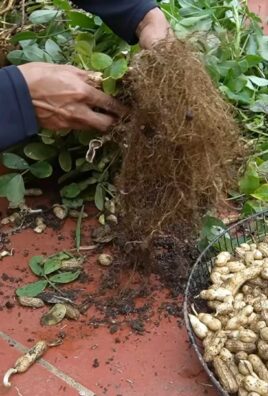
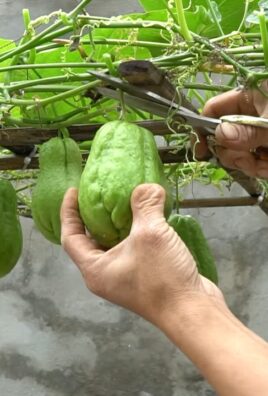
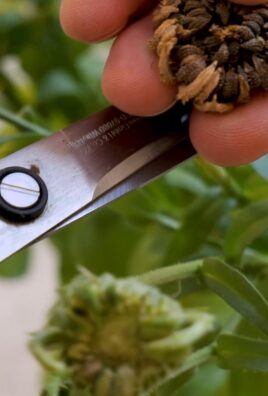
Leave a Comment